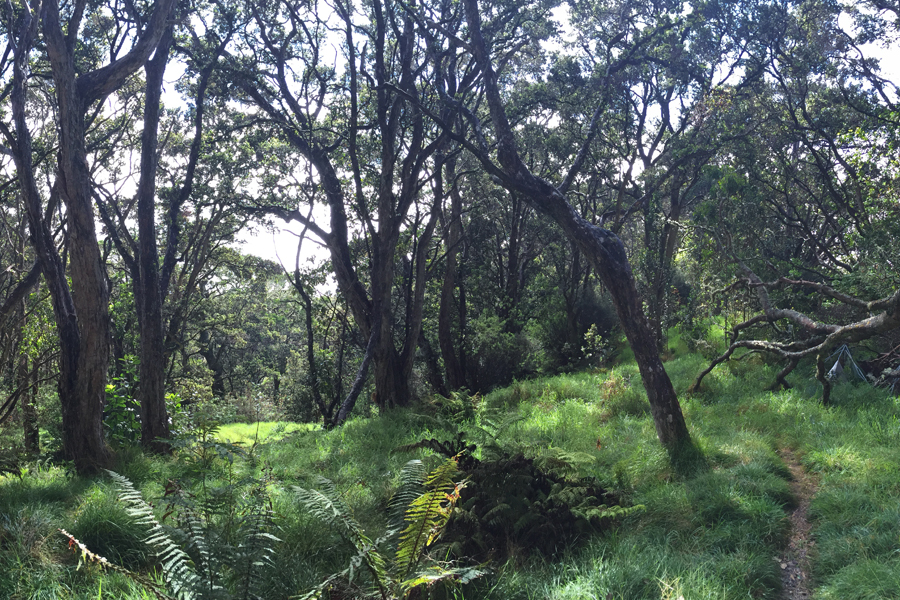Development of improved tools to monitor bird abundance and detect climate-change related invasion by mosquitoes into Hakalau Forest NWR

Hakalau Forest NWR is home to the most intact native forest bird community in the state of Hawaiʻi. However, that community is threatened by mosquitoes, carrying avian disease, which are predicted to increase in abundance at the refuge over time due to global warming. This would lead to catastrophic effects on the native bird populations in one of their last strongholds. Under current bird and mosquito monitoring protocols, such an event would go undetected until it is too late.
The primary goals of this study are to develop new monitoring tools and protocols that will provide managers with information on changes in bird and mosquito abundance across the refuge at much larger spatial and shorter temporal scales than are currently available. We will accomplish this by expanding monitoring transects into important, low elevation portions of the refuge that have been rarely sampled, by automating both the data recording and analysis process, and by developing new mosquito attraction and detection technologies. We will also test the efficacy of using automated acoustic recorders and song-detection technologies currently being developed in the UH Hilo LOHE lab to monitor changes in bird abundance over time across an elevational gradient on the refuge.
Completion of these goals will contribute to the development of a much-needed “early warning system” for both bird decline and mosquito invasion across the refuge that will be valuable for managers at Hakalau and in similar ecological zones across the state of Hawai‘i.
PROJECT DETAILS
FUNDED:
FY2022
PI:
Patrick Hart
Professor of Biology, UH Hilo
Co-PIs:
Josephine Tupu
TCBES, UH Hilo
Donna Ball
Deputy Refuge Manager, Hakalau Forest NWR
Collaborators:
Dennis Lapointe
USGS PIERC
Katherine McClure
HCSU/PIERC

